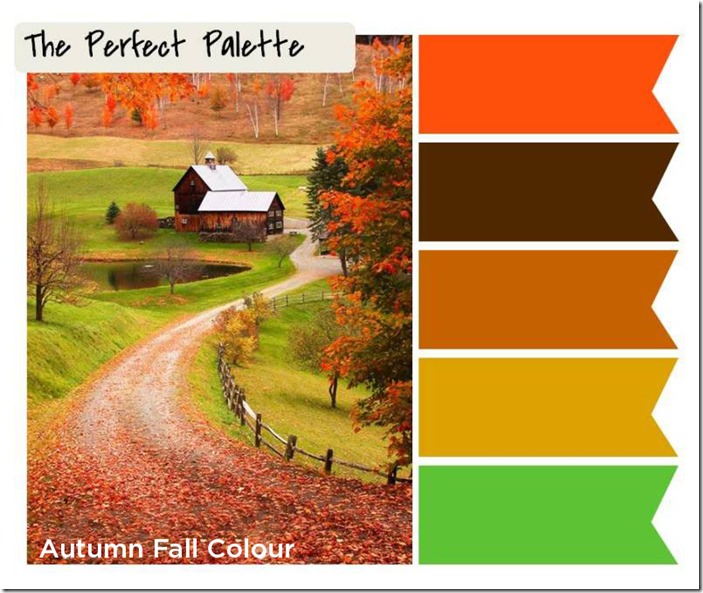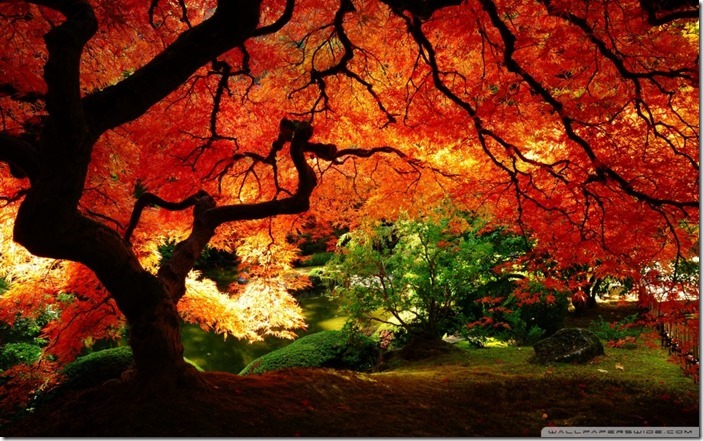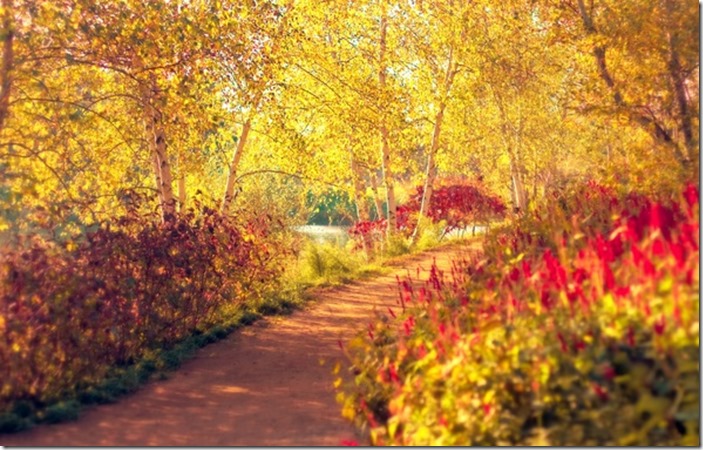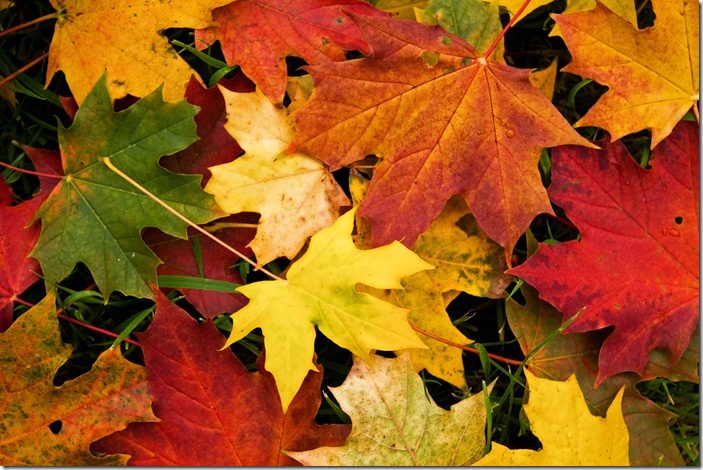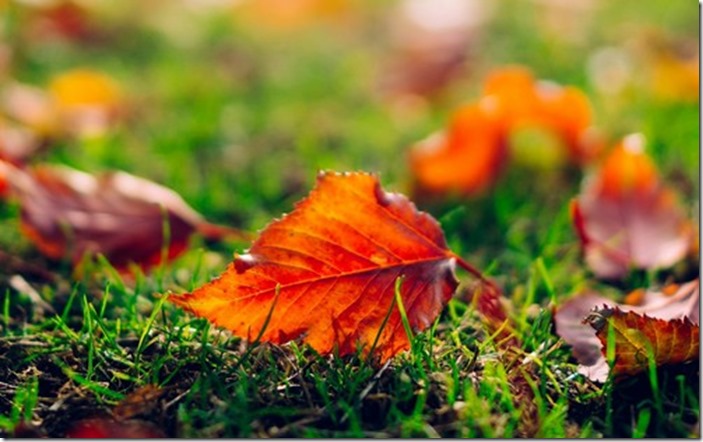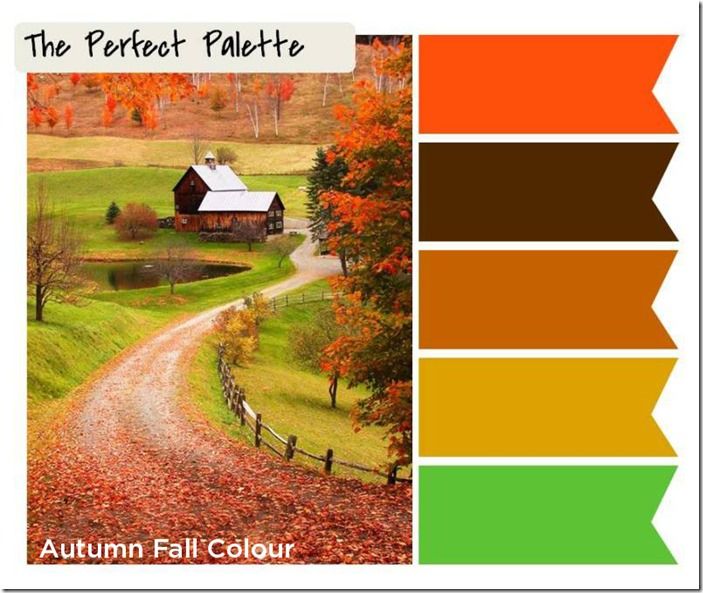
Autumn/Fall Plants: A Design Palette of Bright Orange, Chocolate, Latte, Mustard + Green
The colour green underpins the whole of nature; without green plants we would be unable to breathe or eat. So it is the predominant colour in gardens linking each plot to the surrounding landscape. Even in a highly urban setting there is likely to be one tree or patch of grass within sight. I’ve noticed that autumn greens often contain more blue than the yellow-infused sharp lime greens of spring. Green also acts as a brilliant foil for every other colour and it is the warmest of these colours that come into play in the autumn or fall season in temperate climates.
For some autumn is a sad and melancholy season. Plants die or become dormant, the emerging skeletons of some deciduous trees and shrubs reveal their sombre tracery of twigs and branches and the bright light of summer turns into a softer, sometimes mournful grey. Daylight hours are shorter, light levels are lower and a chill descends on the landscape. For others it’s a season to celebrate and embrace change, in which we can delight in the glowing colours of falling leaves and the harvesting of summer produce.
The designer is presented with exciting opportunities in planning autumn colour. If you have ever noticed sodium lights warming up on a street or motorway you will see how effective their colour is against any shade of grey sky. The same is true of autumn leaves, berries and fruits. that glow, jewel-like all through an overcast day and into dusk in a way that doesn’t happen with warm colours under the hot white light of a summer sky. They look even more amazing against the sharp blue sky of a sunny autumn day. It’s a natural phenomenon. Autumn colours are so velvety and rich they can literally make you shiver with delight as well as with the nip in the air.
There’s a natural tendency to choose plants that are ‘looking good’ in nursery catalogues at the time of planning a planting scheme, so be careful to balance your choices to accommodate other seasons. If you are beginning planting in autumn you may sometimes have to work harder to convince non-gardening clients of the overall scheme because they will have to wait at least until spring to start to see the bigger picture.
Either way they will still want to see immediate impact from the initial planting so I always start with the season I am in and work from essential architectural structure and form through to the wide range of perennials and grasses most of which will be unavailable until the following spring. Bear in mind soil conditions and ph. Some plants, for example euonymus alatus colour better on alkaline chalk, others, such as hydrangeas prefer acid clay to perform at their best.
Select autumn – flowering perennials such as rich yellow rudbeckias and helianthus with their velvet brown centres, dark pink russet-centred echinaceas, cinnamon heleniums and bronze fennel. Pure white, too glows against darker skies and lowering light, but discolours badly as the flowers fade.
In very small gardens there may be room for only one shrub or small tree to take centre stage in autumn. Make sure that it is visible from inside the house. Maximum colour value is obtained from those with interesting bark or spectacular berries.
The kitchen garden can also jump with colour like traffic lights: the little pings of red from raspberries, bold, brash squashes and pumpkins, ‘Bright Lights’ Swiss chard , stripy marrows, rosy apples, yellow crab apples, rose-hips – to be stored, made into preserves, jellies and chutneys and enjoyed into winter.
Allow autumn leaves to lie in state for a while to be admired in all their glory, but clear them from lawns and paths before they start to degrade. Soon the garden will enter its quietest winter period of subtle silvers, browns and greys, enhancing the dark greens of evergreen plants.
